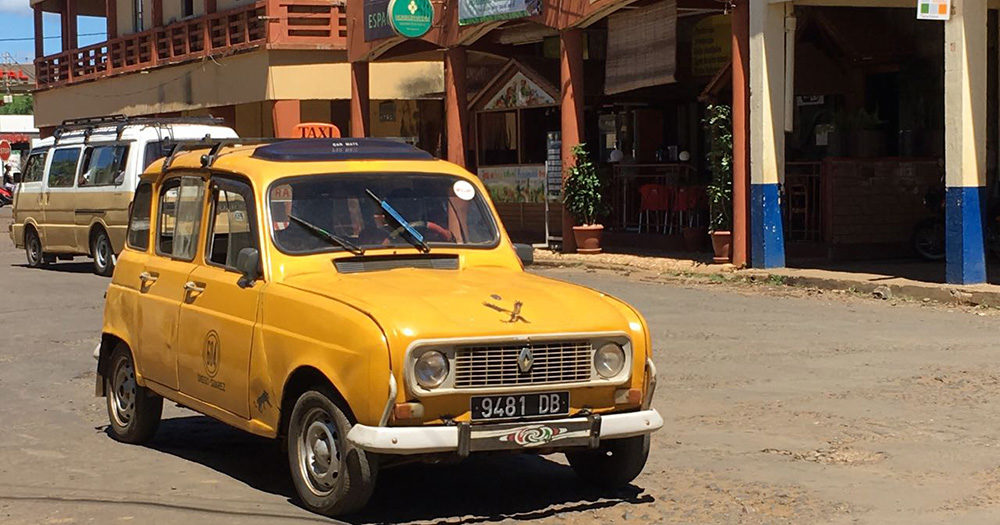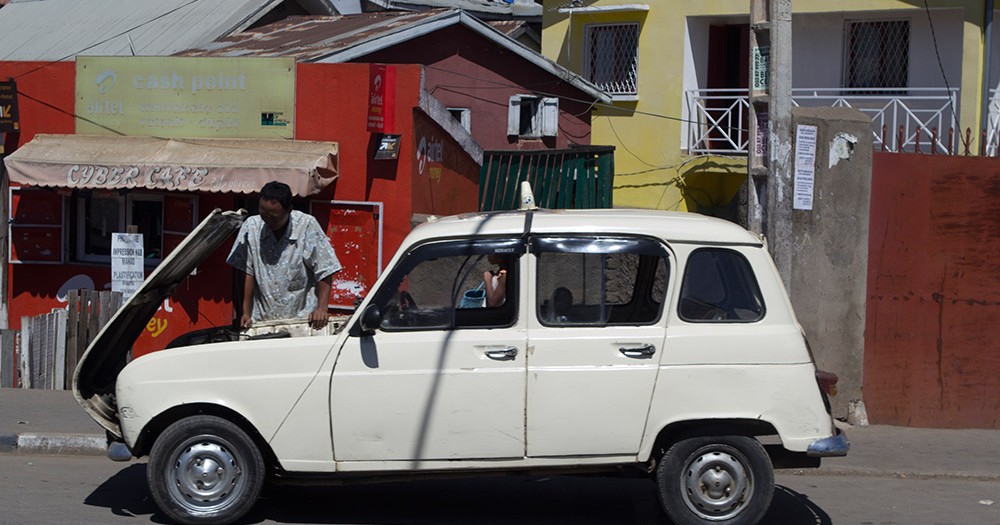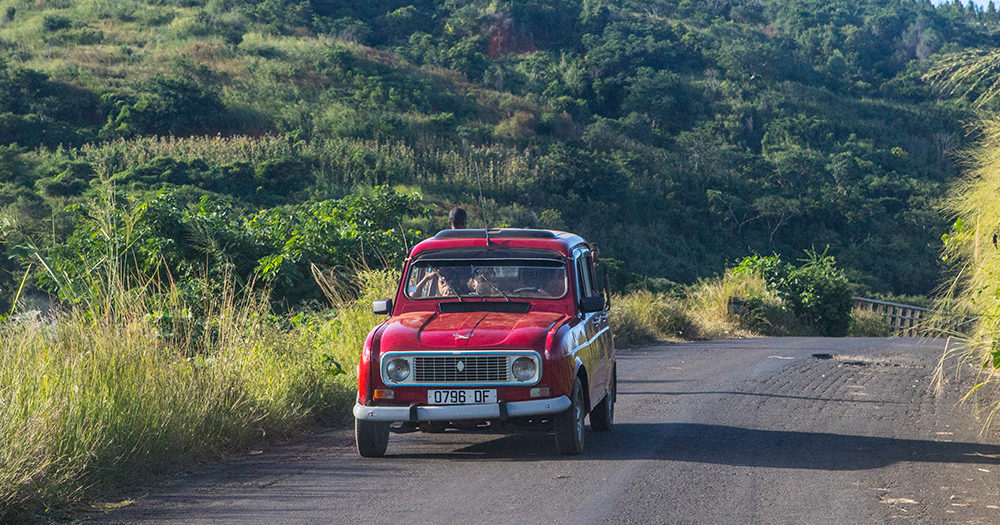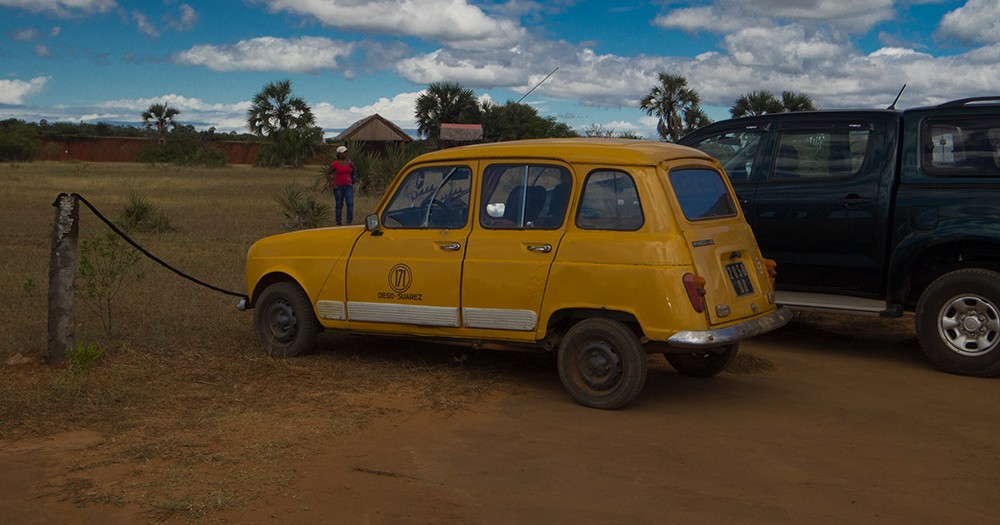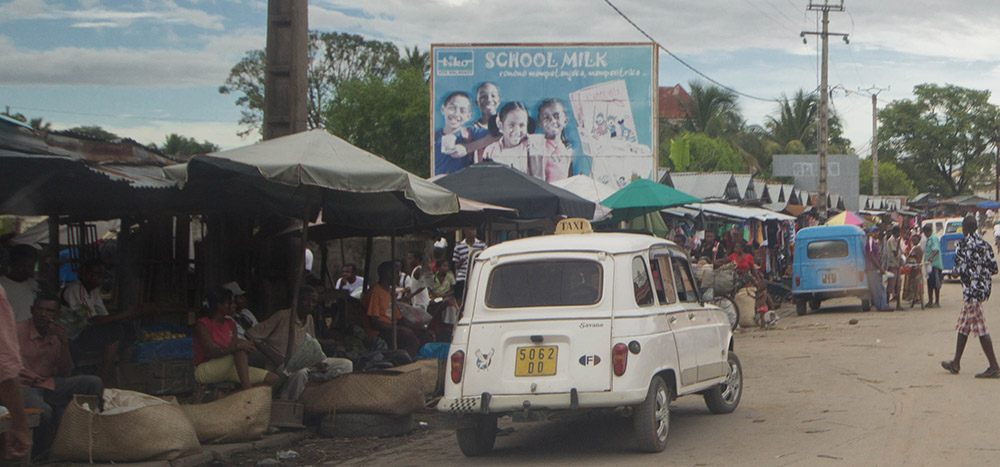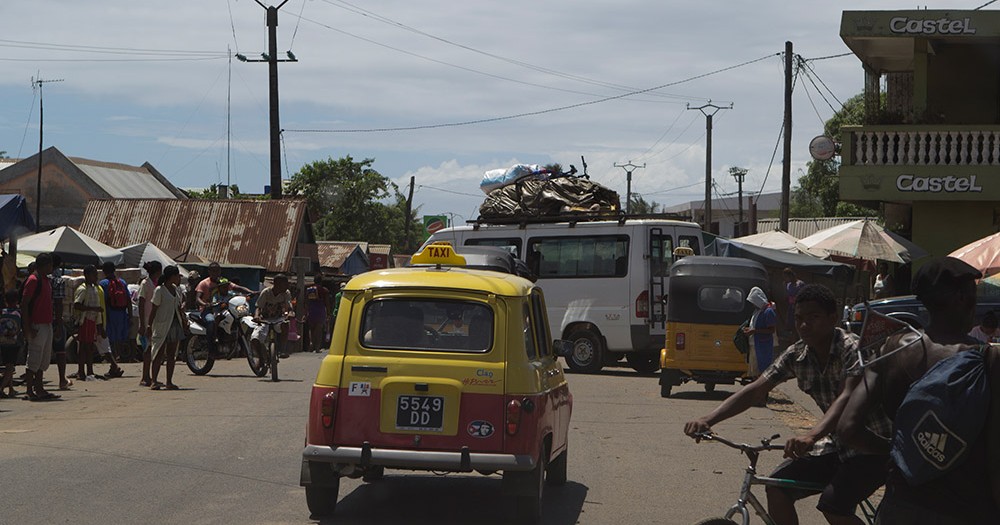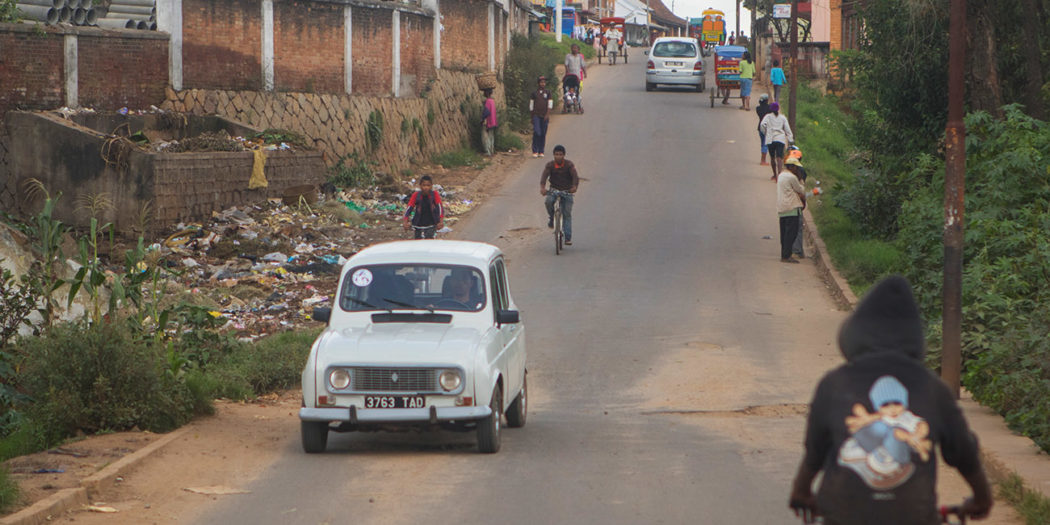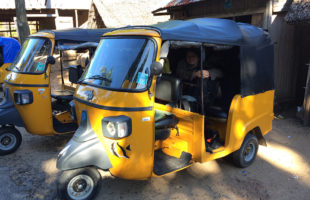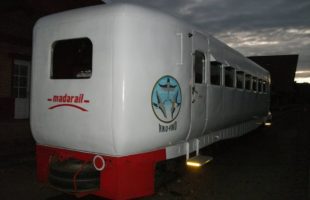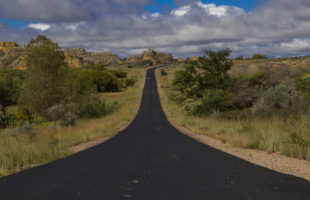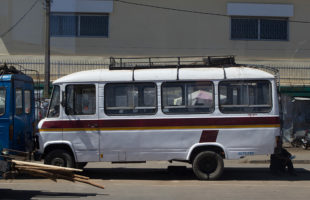Everywhere in Madagascar’s towns and villages they travel as normal taxis: the Renault 4s. Elsewhere one sees them at most still as well maintained classic cars on exhibitions or in lover garages, on Madagascar however they belong to the completely normal street scene. But why the R4?
As early as the end of the 1950s Renault wanted to plan a small car under the name “Project 112”, which would offer as much space as possible, have five doors and be suitable for poor road conditions. These initial ideas alone give us an idea of why Madagascar of all places is still an Eldorado for the R4 today.
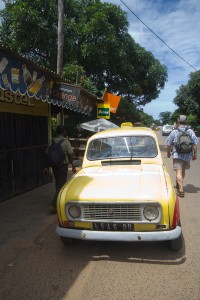
The finished Renault 4 began its triumph at the International Motor Show (IAA) in Frankfurt in autumn 1961. At that time still as Renault R4 – only four years later the R was dropped in the official sales name. A little later the new car was also presented at the Paris Motor Show. The name of the car was inspired by the built-in four-cylinder engine. For the first time Renault had built front-wheel drive in one of its cars, and the price was surprisingly low by the standards of the time: it was not even supposed to cost 13,000 Francs, i.e. less than 2,000 €. The Renault 4 was to become a car for the masses, the successor to the famous Renault R4 CV. Contrary to all prophecies of doom, the R4 also made its triumphal march through France, and was soon even produced in South Africa and Madagascar.
Over the years, different variants supplied the right R4 for every driver: from the “plein air” convertible to the sporty “GTL” with 34 hp, Renault provided a whole range of differently equipped R4s – the “Sinpar” model even had all-wheel drive. The basic model was always only slightly changed. The R4 was supplied as standard with 0.6 to 1.1 l engine, tubular steel seats with canvas covering, a weight of just 600 to 720 kg, an engine capacity of 603 to a maximum of 1108 cc and 26 to 34 hp. In 1957, the three-speed transmission used until then was replaced by four gears, what remained was the characteristic turret shift. Drum brakes were part of the R4 until 1982, after that the models GTL and R4 F6 had front disc brakes.
Exactly 8,135,424 Renault 4 cars rolled off the production line in 68 countries worldwide – the R4 is still the second best-selling car in France today. Production was finally discontinued in 1992. The only drawback of the R4 until then: its body, which is very susceptible to rust. The different wheelbase of the car is still odd and widely known today: right 2401 mm, left 2449 mm. It was caused by the torsion bars placed one behind the other on the rear axle, which was also owned by the successor model.
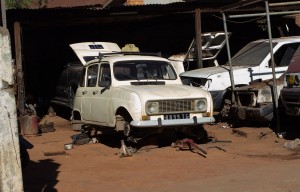
Via France, the R4 quickly found its way by ship to the former colonial country of Madagascar. Unlike many other cars imported or produced there, however, the Renault 4 has remained for decades. Three reasons make it the most popular Madagascan taxi:
- The independent and soft suspension. Madagascan roads are bumpy, uncomfortable and full of potholes. Besides the Route Nationale and major roads within cities, the fewest roads are asphalted. If you are a taxi driver here, you need a car that can also be used on rough terrain. The fact that the R4 is not designed for more than 110 to 120 km/h as standard doesn’t matter in Madagascar – the roads anyway don’t give any higher speed.
- Its longevity and simple mechanics. Hardly any other car is as durable as the R4 with few failures at the same time – and once something is broken, one gets suitable spare parts in almost every city in Madagascar. However, most Madagascan taxi drivers know their car well enough to carry out all kinds of repairs themselves with the simplest means. Often they screw and work completely without plans: As long as it holds, it’s ok. R4 models built before 1975 can, if necessary, even be started through a hole in the bumper with the jack crank.
- Low fuel consumption: the R4 consumes 5.4 litres of petrol per 100 kilometres on average. Since gasoline in Madagascar is as expensive as in Germany, but most people earn much less, it must never be used more gasoline than is absolutely necessary. Some curious do-it-yourself constructions help the R4 on Madagascar to an even lower consumption – or at least to smaller tanks, which the driver first fills together with his passenger at the beginning of the journey.
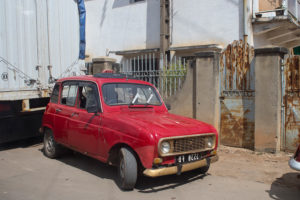
Besides the Renault 4, the Citroën 2CV, another famous vehicle in automobile history, is also used as a regular passenger taxi in Madagascar. About 8000 cars are registered as taxis on the island. In Madagascar there are taxi ranks in the real sense only in the capital, mostly one finds taxis simply everywhere at the roadside. In Antananarivo and most other cities the vehicles are light beige, in Antsiranana (Diego Suarez) in the north bright yellow, in Sambava on the north-east coast painted yellow-red. They travel smaller distances between nearby cities or within them and are slightly more expensive than Taxibrousse or Taxi Be, but much more comfortable and a little safer.
There is no odometer on Madagascar, each passenger negotiates his price individually with the taxi driver – preferably before the trip. Small breakdowns are quite normal due to the age of the Renault 4s and countless flickering: homemade fuel hoses and reduced tanks, starting without keys or holes in the bottom metal are simply part of the Malagasy taxi. In short: For short trips the R4s offer a real Madagascan experience in an original classic car.
- Taxi Malagasy – In a Renault 4 in Madagascar
Germany 2013 | Documentation | 43 min
 MADAMAGAZINE Your Magazine about Madagascar
MADAMAGAZINE Your Magazine about Madagascar
